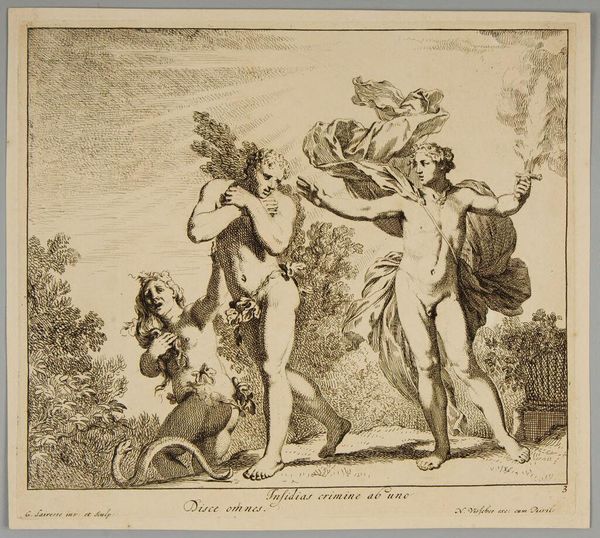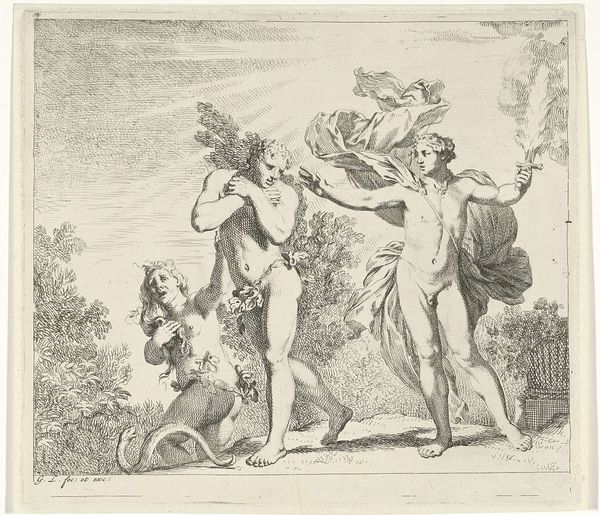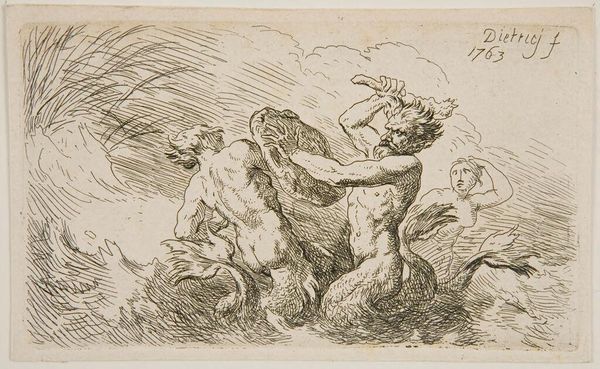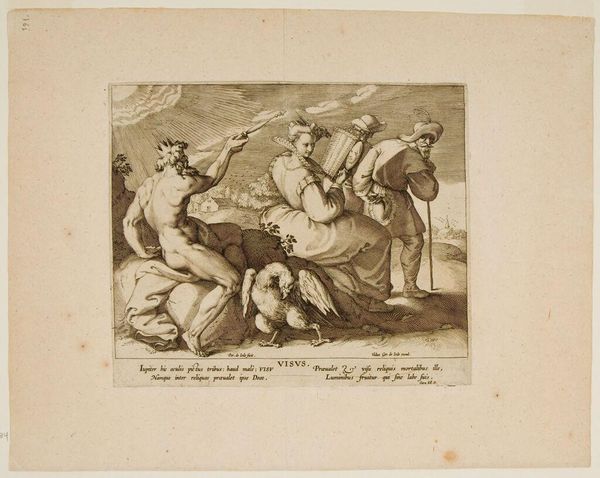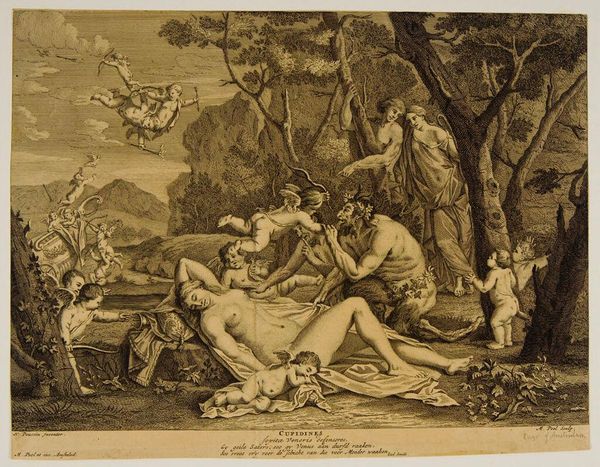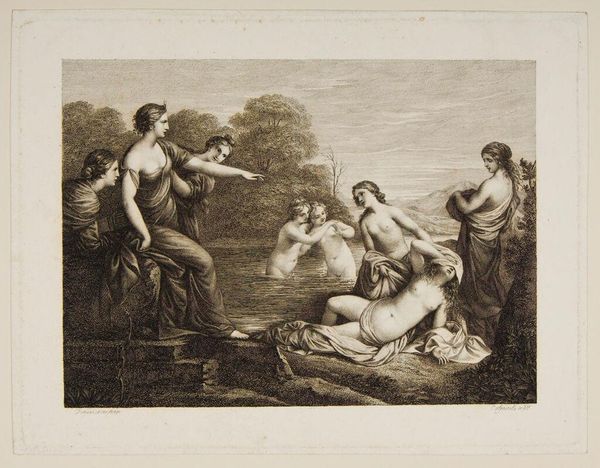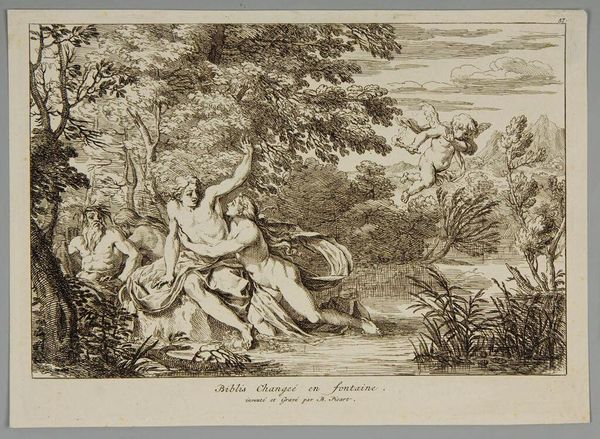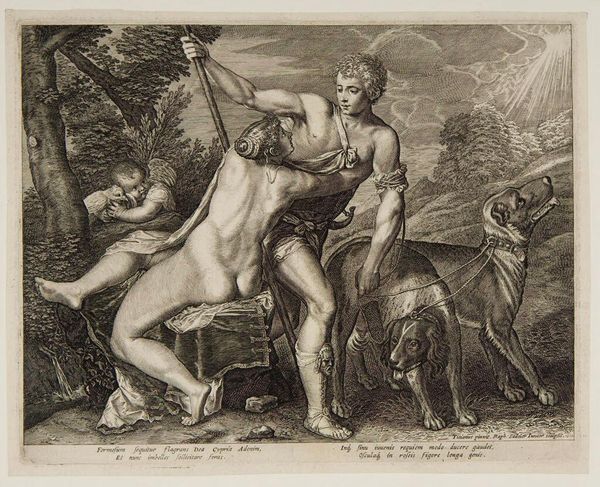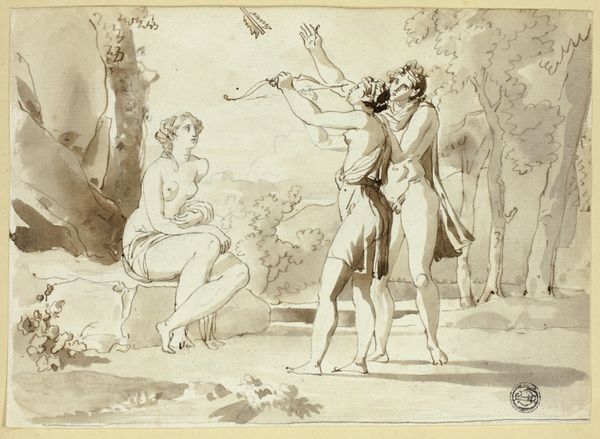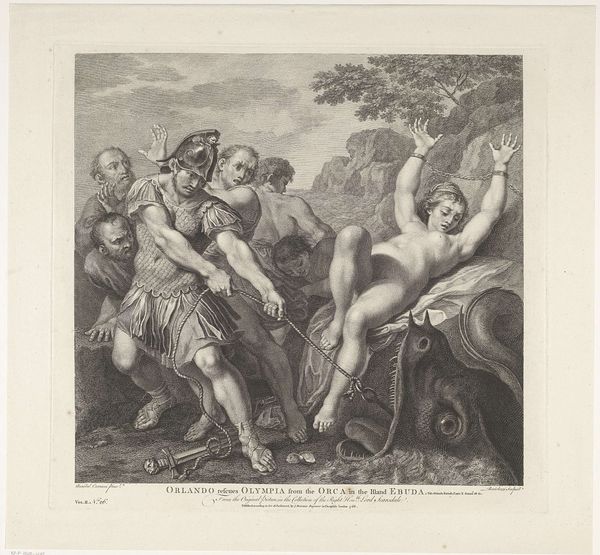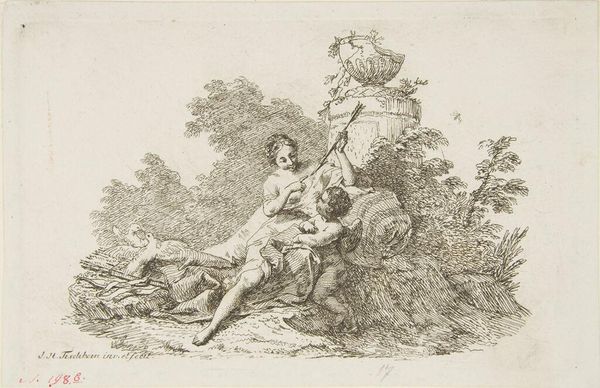
Copyright: CC0 1.0
Editor: Here we see Gérard de Lairesse's print, "The Expulsion from Paradise," housed at the Harvard Art Museums. It's a powerful image, though the figures seem almost theatrical. What does this depiction of such a pivotal biblical scene tell us about the context in which it was created? Curator: Well, let's consider the imagery. Lairesse presents Adam and Eve almost as classical figures, doesn't he? This neoclassical style reflects the period's emphasis on reason and order. It uses the biblical story to address broader social anxieties about morality and the consequences of disobedience. Editor: So, it's less about religious piety and more about societal control? Curator: Precisely. The print would have circulated widely, shaping public perception of sin and punishment within the framework of Enlightenment ideals. Consider how public imagery reinforces specific power structures. Editor: That's fascinating. It shifts my understanding of religious art completely. Curator: Indeed. It reveals the intertwined nature of art, religion, and the social and political landscape.
Comments
No comments
Be the first to comment and join the conversation on the ultimate creative platform.
